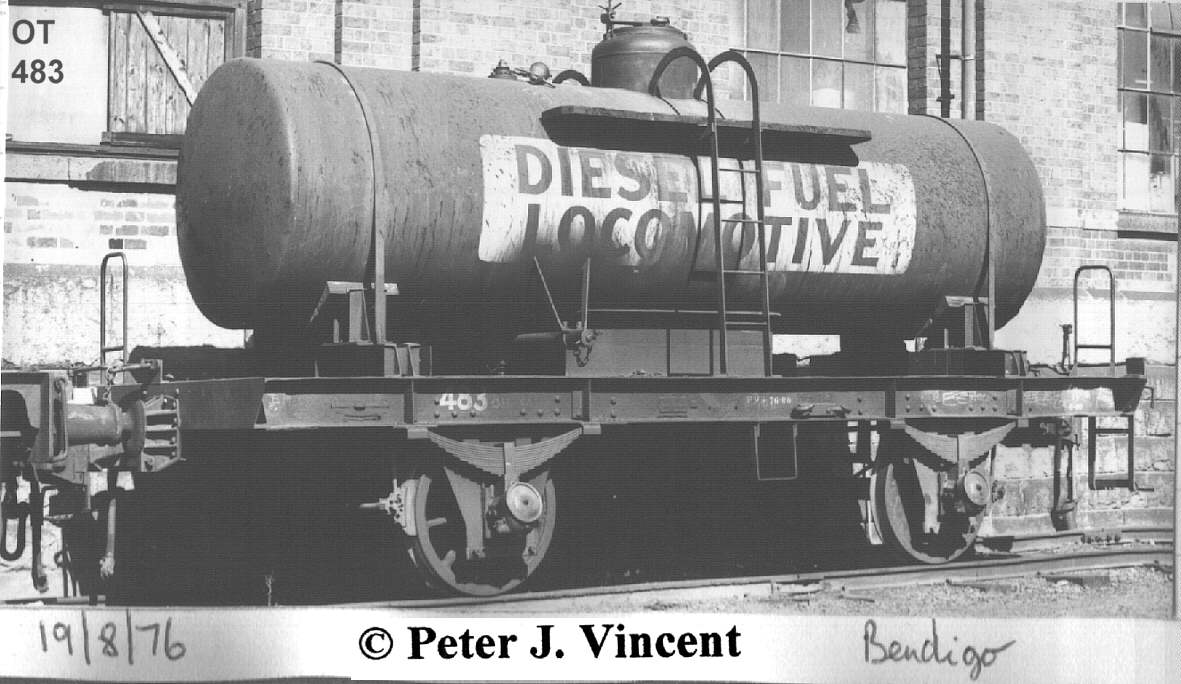

The tank wagon group started in 1902 with the petroleum group "Shell" requiring tank wagons. Up to this time, tank wagons for water, etc were modified from surplus engine tenders, usually of the six and four wheel variety. Wagons in the new "Oil Tank" group were initially purpose built.
Wagons 1 - 83 were issued to traffic between 1902 and 1928. Up to 1928 all the wagons were fixed wheel. From 1928, bogie tank wagons were issued.
To complicate matters, it seems that any wagon that qualified as "tank" was placed into this number group. This led to patchy number groups within this class as four wheel wagons were placed in service in between bogie construction. And not all tank wagons were for petroleum and like products. Some were for transporting water.
From 1961, the bogie tank wagons were reclassified into groups _TW_ and TWF_ . In later years TWX_ tanks were introduced. TW indicated low speed, TWF for high speed, non bogie exchange and TWX for "bogie exchange" capability and high speed.
Original lettering had "OIL TANK nnnn" on the underframe where "nnn" was the number. In the late 1970's this was shortened to "OT". The code "OT" was adopted when railway records were computerised. This writer has adopted "OT" for personal computerisation of records and uses "OT" to mean "OIL TANK" where referenced.
Most four wheel petroleum tank wagons used by Shell and British Petroleum were placed in storage by 1977 and subsequently scrapped or disposed of.
A few four wheel tank wagons were in rail service transporting loco lube oil and diesel fuel.